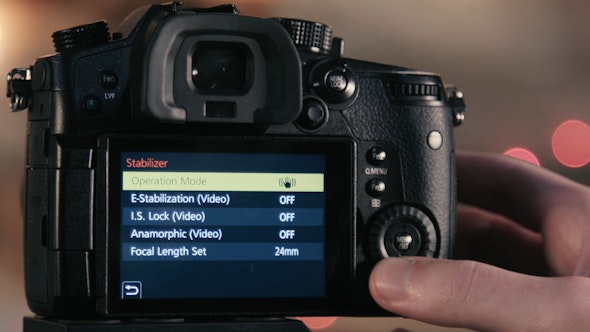How to Use Dual IS with the Panasonic GH5
Stabilization technology has come a long ways in the past few years. First we had stabilized lenses that were capable of shifting a few key optical elements to compensate for an amount of lens shake or vibration. With the advent of mirrorless cameras, it became possible to shift the camera sensor in this same way, allowing a properly-equipped camera body to compensate for any lens, any time. And now, in a move that is both inevitable and yet still revolutionary, Panasonic has introduced Dual IS - the first system to effectively marry lens-based stabilization with sensor-based. Here’s how to make use of it:
Dual IS Only Works With Stabilized Lenses, But it is Automatic
The first step is to make sure lens stabilization switch is on. You can think of the stabilizer switch on your lens is like a manual override. On or off, the camera will mirror its status internally. Because of this, Dual IS functions as an automatic background feature instead of a menu option.
If your lens is stabilized but lacks a hard switch on the barrel, no worries. Go to the second record menu, then open the “Stabilizer” sub-menu. In video mode, you only have one option for the Operation Mode, but in any photo mode you can choose between Normal (the waving hand on top) or Panning (the second waving hand). Normal will stabilize across all axes, while Panning only compensates for up-down movement, based on the assumption that you are panning (hence the name) and you do, in fact, /want/ the left-right movement.
Non-Stabilized lens
Even if your lens does not feature a stabilizer, you can still make use of the in-body stabilization of the Panasonic GH5. While not quite as powerful as the Dual IS, it will provide about 2-3 stops of stabilization for you, which is certainly nothing to sneeze at.

We go to the same Stabilizer sub-menu as before, but now we have a little bit more to think about. After you set an operation mode, you can also begin to probe the other settings and options. For example, you might look into utilizing E-stabilization. This stabilization mode will crop into your image slightly to perform a digital stabilization. It’s not great, but it’s an option for you if you need to really squeeze every ounce of stability out of this camera. And for the anamorphic shooters, there is a dedicated stabilization mode just for you as well.
If you are shooting with a prime lens, or a zoom you intend to keep at a specific focal length, then you can also calibrate the camera to your specific focal length. The last option at the bottom, fittingly called Focal Length Set, will let you manually set up the camera to your preferences. Who knows, maybe with a little fiddling and experimentation you’ll find that you like how your 24mm performs when it’s stabilized like it’s a 15mm. The power is in your hands.

In Conclusion
The stabilization options in the GH5 are either phenomenal or very good, depending on your use case. If you can pair it with a stabilized MFT lens, you will find yourself experiencing one of the smoothest shooting experiences known to man. But even without the lens-body combo, the GH5 can be customized to do anything you could ask of it.



